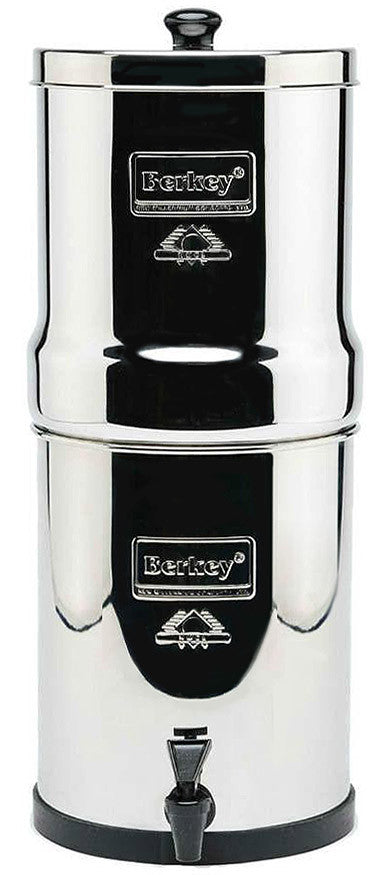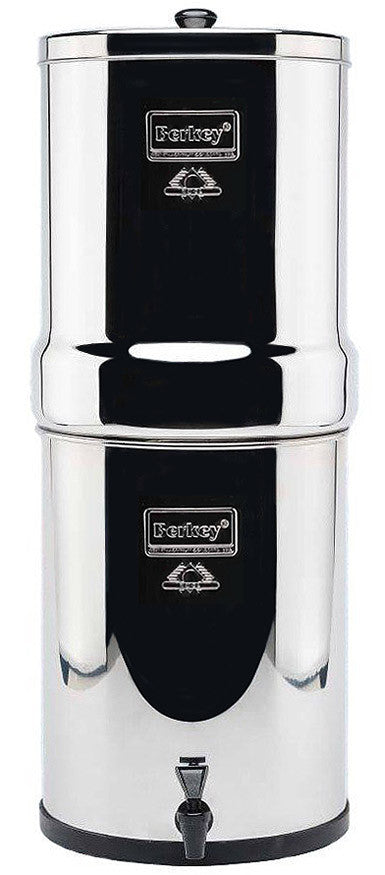
Over the centuries, various methods and processes have been developed to ensure access to high-quality drinking water for all humans. Research and studies have been conducted to achieve the ultimate goal of completely disinfecting water.
Particular chemicals or substances are responsible for this water disinfecting process. However, through careful and thorough research, it has been found that disinfection by-products are formed whenever these disinfection treatment chemicals collide with natural organic or inorganic substances in the water.
Disinfection by-products result from a chemical reaction between a mixture of used disinfectant agents and organic or inorganic matter in water.
Studies have been conducted on the relationship between these disinfection by-products and human health. It was found that disinfection by-products have a significant impact on a person's health.
Furthermore, it is essential to expand people's knowledge and spread awareness about the effects of so-called disinfection by-products.
What are Disinfection By-products?
Generally, a disinfection by-product is a chemical reaction resulting from the collision of the disinfectant agent used and the organic or inorganic substances found in the water.
The most common disinfectant agents used when disinfecting water are chlorine and chloramine.
Recognizing the use of Chlorine in disinfecting water was one of the most outstanding achievements of the 1900s. It was well-celebrated that water chlorination contributed positively to public health, particularly in achieving quality and drinkable water for the people. It has prevented waterborne diseases such as cholera and typhoid.
On the other hand, although it helps reduce bacteria in water, chlorine has not become the ultimate water-cleansing solution as it was many decades ago. This is because it continues to produce a significant amount of disinfection byproducts.
So, Chlorine was switched to Chloramine. Although the production of disinfection by-products from chloramine has been significantly reduced, they still exist in our waters.
Not to mention that when the switch was made, many tap water users reported having skin diseases, respiratory symptoms, and digestive disorders.
Properties of Chloramine
-
Chloramine has one characteristic that allows it to achieve longevity in water, which is very useful in travel through long-distance water pipes.
-
Chloramine in water is also beneficial in reducing the distinct taste and odor that the water typically has.
-
Chloramine has proven its advantage in lowering the number of disinfection byproducts found in water. Incomparable to Chlorine, Chloramine reduces the production of disinfection byproducts in water. Disinfection byproducts are unwanted, unexpected, and unintentional results from the chemical reaction between Chloramine and the respective organic or inorganic substance.
As EPA rules on allowable disinfection byproducts in drinking water have become more stringent, water utilities employ chloramine for secondary disinfection.
A limitation of chloramine in water treatment techniques is the potential for the nitrification process to begin whenever water is distributed.
What is Nitrification?
According to Wikipedia, Nitrification is the biological oxidation of ammonia or ammonium to nitrite, followed by the oxidation of the nitrite to nitrate. The transformation of ammonia to nitrite is usually the rate-limiting step of nitrification. Nitrification is an important step in the nitrogen cycle in soil.
Nitrification increases when the water temperature increases. Additionally, nitrifying bacteria are challenging to remove, which affects water quality and leads to only minor health issues.

Nitrification must be avoided; to do so, water treatment plants must reduce the residence time of water in the distribution phase. Yet, some water disinfecting plants control nitrification in their water systems by occasionally switching the disinfecting agents, Chloramine and chlorine, to Chlorine and vice versa.
Ironically, this great discovery in water disinfecting carried unintentional health hazards. It is through the disinfection by-products that some minor and serious health problems, such as cancer, can occur.
Chlorine and Chloramine are considered potent oxidizing agents, which means they can reduce compounds that form to give water a certain taste or odor and leave residues of any form of water contamination. These disinfecting agents enable water to reach the consumer's tap with full assurance of accessing quality and safe water.
As these disinfectant agents freely flow into the water to do their business, they tend to encounter naturally present compounds. On this occasion, different variations of disinfection by-products are produced.
It is complex to assemble every piece of this process. The water naturally contains many disinfectant agents and organic and inorganic substances.
In addition, several disinfection by-products are produced; each combination of one party bumping into the other results in a different kind of disinfection by-product.
Factors that Affect the Production of Disinfection By-products
Furthermore, many factors contribute highly to the formation of these disinfection by-products. The chemical reaction will vary according to:
-
The kind of disinfectant agent utilized in the water disinfectant process
-
The quantity or measurement of the disinfectant agent
-
The concentration of natural organic matter and bromide/iodide
-
The period since dosing (i.e., water age)
-
Water's temperature and;
-
pH scale of the water
These factors have a huge impact on the outcome of a disinfection by-product. For example, the higher the quantity or measurement of a disinfectant agent, the bigger the volume of disinfection by-products. Shorter dosing can result in higher concentrations of organic compounds and disinfection by-products.
Are there different kinds of disinfection by-products?
There is a wide variation of disinfection by-products because the combinations of disinfectant agents and organic or inorganic compounds are endless. Hence, each combination can result in a different type of disinfection by-product.
For example, public or private swimming pools that use chlorine to disinfect their water mostly contain trihalomethanes, a disinfection by-product.
Furthermore, another by-product, trichloramine, is also found in the same situation.
Trichloramine results from the combination of urea, an organic compound from sweat and urine, and chlorine, responsible for the distinct pool smell.
Moreover, these by-products can cause asthma, which a professional usually diagnoses. Most importantly, this disinfection by-product presents several risks that significantly trouble a person's health.
This equation involves three key components: the disinfectant agent, naturally occurring organic or inorganic compounds, and disinfection by-products. We could name all the examples under each subject.
However, that is another topic to discuss later, as it would require a lengthy conversation. It is difficult to do so because each subject encompasses an endless array of substances.
The bottom line is that there can be thousands of results when we try to mix and match everything.
However, one thing is certain: disinfection by-products pose potential threats to human health.
The Health Hazards of Disinfection By-products
Disinfection agents were used to achieve one common goal: ensuring everyone has access to safe and drinkable water.
However, that amazing discovery came with an unexpected consequence: the formation of disinfection byproducts (DBPs). These DBPs continue to scatter in our water, increasing the number of people who get sick. Despite our attempts to clear them out, our efforts have been outnumbered.
DBPs are still invincible, from water chlorination to chloramine disinfection to multiple disinfection methods. The severity of the health problems that people might acquire from disinfection by-products depends on the volume of water they consume.
It definitely can be alarming, and at the same time disappointing, that you expect your area to distribute clean tap water into your homes and find out that it might harm your health.
As the water travels through the water pipes going into your home, it already has enough time to produce DBPs unintentionally. Although chlorine, chloramine, or any other disinfecting agent might be used, the disinfection process still results in health-threatening cases.
When DBPs are unknowingly consumed over time, these toxic by-products can cause serious health problems. They have been associated with causing cancer, miscarriages, abnormal birth weight, and many other consequences.
Most importantly, DBPs are not only acquired from drinking water. It can also be acquired through absorption and inhalation. You have been reported to absorb twice the quantity of DBPs when you take a warm shower. You can also inhale DBPs by washing the dishes or doing laundry.
Unfortunately, limited information about the health problems you get from obtaining DBPs is available. There have been countless studies done to identify specific health problems that are caused by disinfection by-products.
However, such studies have not yet established consistency in determining accurate answers. The most accurate by-product so far is trihalomethane, the most common existing by-product.
Consecutive consumption of this disinfection by-product formed in chlorinated water can lead to bladder cancer. As we consider these numerous questions, the concern continues.
If worth anything, the risk of drinking water that did not go through any disinfecting process is still greater than disinfected water containing such DBPs. Additionally, major health consequences only arise through long-term exposure to DBPs instead of non-disinfected water, which can get you sick in minutes or hours.
Nonetheless, organizations such as the Environmental Protection Agency and other health organizations continue to research to better inform the general public about the nature of these disinfection by-products.
The Step Towards Removing Disinfection By-products
Water Disinfecting Plants are now practicing this new method to minimize the number of DBPs in water. They persistently strive to remove organic or inorganic substances naturally present in the water before adding the disinfectant agent.
This ensures that disinfecting agents do not have as many organic or inorganic substances to collide with or oxidize with, significantly reducing the production of disinfection by-products.

All water systems and utilities are carefully supervised. Your local area is expected to incorporate disinfectant methods into its water systems to provide the community with drinkable water.
Certain regulations are being implemented for your local area to ensure reliable water is distributed throughout the community. Constant monitoring is also required to determine the presence of disinfection by-products in the area's water resource. This is to take the needed and immediate course of action whenever necessary.
The Environmental Protection Agency requires every region to maximize water disinfecting methods in their water systems, which, at the same time, does not increase the number of DBPs during the disinfection process.
There is difficulty in determining the proper preventive actions to prevent the acquisition of these DBPs. There are a lot of factors that could make up the whole picture.
The source of water, the type of disinfectant used, changes in seasons and weather, and the distance between the water disinfecting plant and your house.
← Older Post Newer Post →





